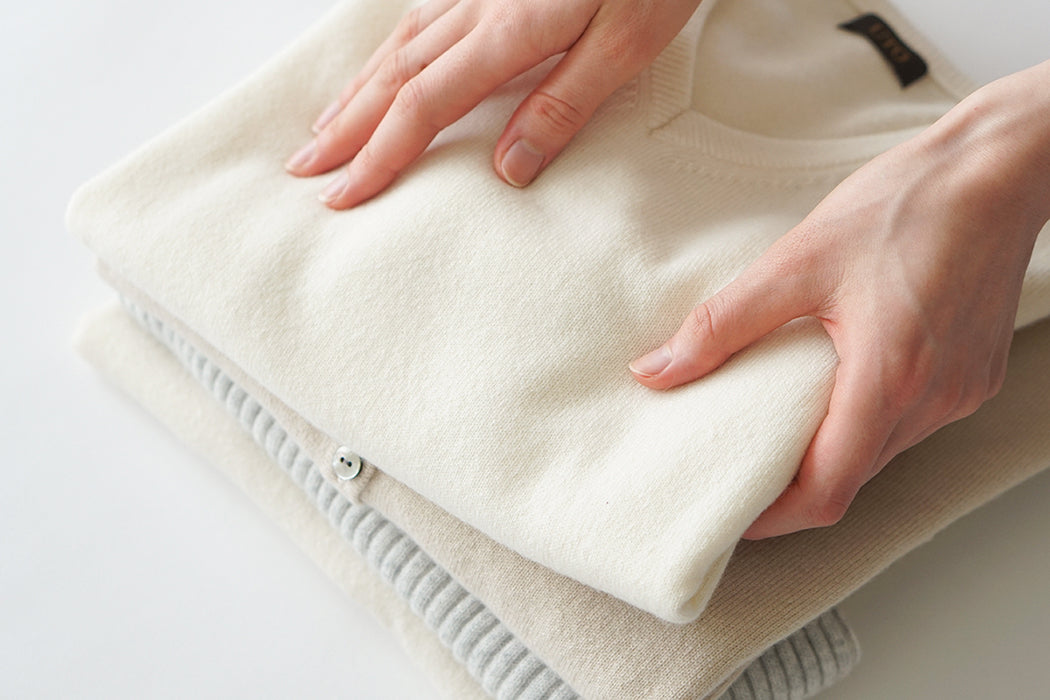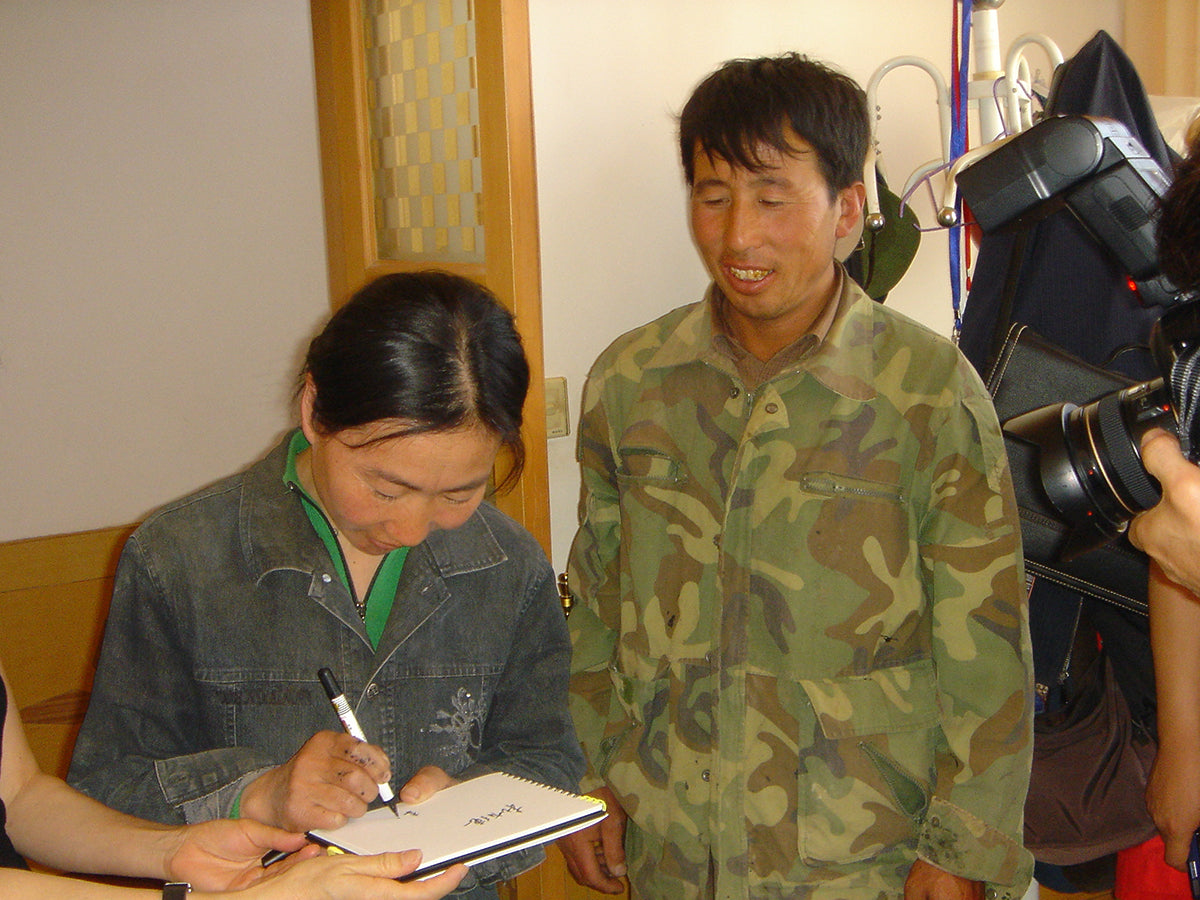Journey to the Homeland of Cashmere, Part 3: Relief and Inspiration: Witnessing the Harmonious Relationship Between Cashmere and Humans Firsthand

Unlike the wool of sheep, which is trimmed with clippers, the downy hair of cashmere is collected by meticulously combing the undercoat beneath the long bristles using a rake-like tool. Every stroke of the comb harvests an impressive amount of this downy hair. Its length, fineness, and softness were visibly magnificent to even my untrained eye.
In a spirit of honesty, I asked Mr. Du about the questions and concerns that had been troubling me. Always with a smile, Mr. Du addressed each of my inquiries.

One question I had was, "Are cashmere goats truly free from abuse throughout their entire lives?"
Mr. Du reassured me, "Cashmere goats are never mistreated. They are our treasured family members and assets that live alongside us. They are our daughters' best friends, especially when they return from boarding school on weekends. Therefore, there's no way they can be mistreated.
When I asked him, "Human hair pulling can be quite painful, so does it hurt a cashmere goat to have its downy hair removed?"
Mr. Du explained, "The downy hair of cashmere goats is their winter coat, which naturally sheds in the summer. We're merely assisting that process. Since the hair falls out naturally, combing it doesn't cause pain. In fact, if not combed, the goats will rub against rocks and other surfaces to remove the shedding hair, which could potentially damage it. Therefore, combing or 'carding' as we call it, is actually best for the goats.
I then queried, "Why do you tie the legs of cashmere goats when you don't tie sheep during shearing?"
Mr. Du responded, "Cashmere goats are more spirited than sheep, hence we lightly secure their legs to prevent them from becoming uncontrollable and possibly causing injury. This action also seems to have a calming effect on them."
In fact, the cashmere goats actually became docile when being combed. Their warm, tawny eyes made them a delight to behold. I had already known that there was no mistreatment from my time in Japan, but not that the hair removed was "naturally shedding winter hair." My relief was immense upon hearing this, and I felt a renewed sense of joy about continuing my work with cashmere.
The goats seemed invigorated after carding, as though they had been to a barber. By noon, even in May, the outdoor temperature exceeded 30 degrees Celsius. Despite the dry air preventing sweat, the sunlight was intensely bright. I realized it must be uncomfortable for the goats to still have their winter coats, given that the temperatures would soon be over 40 degrees Celsius.

With each query, my earlier doubts were put to rest, allowing me to immerse myself once again in the process of carding. My arms began to tire after five minutes of this labor, prompting a well-deserved break. The hands of Mr. and Mrs. Du moved in a smooth, rhythmic pattern, managing to finish the carding within an hour. Shearing a sheep, a process I had previously seen on television, takes merely five minutes, making the cashmere harvesting seem all the more labor-intensive.
After one goat was carded, I brought up another concern I had.
Some people claim that cashmere grazing contributes to desertification; what's your take on that?"
Mr. Du responded, "As cashmere owners carrying on the legacy of our parents, we rotate our grazing areas daily to prevent exhausting the plant life. Sometimes this involves considerable distances. Grazing boundaries are well defined and documented," he said, showing me the list.
"Desertification is a concern we shepherds consider seriously," Mr. Du added. This gave me pause, making me worry that I had broached a sensitive topic. However, seeing Mr. Du's calm demeanor, I felt reassured.
The pastoralists, I learned, think about the issues we worry over abstractly with greater seriousness and pragmatic action. Seeing the list with photos and names reminded me of this. Because of these people, living and working with cashmere in the semi-desert's harsh conditions, we can enjoy fluffy cashmere. It made me realize we shouldn't rashly blame cashmere for desertification.

Before this trip, a nagging fear had been that perhaps the cashmere goats were suffering for the sake of human wants. But witnessing the mutual respect between the herders and the goats reassured me that my work benefits both parties. Learning that they took desertification even more seriously than we did was the icing on the cake.
As we departed from Mr. Du's home, we drove through the vast Inner Mongolian semi-desert, seeing herds of white cashmere goats dotting the horizon. I felt joyous about having visited the homeland of cashmere.





